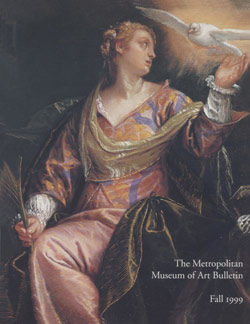Woman in a Blue Dress
Thomas Wilmer Dewing American
Not on view
Trained in Boston and Paris, Dewing preferred as his subjects idealized patrician women in attitudes inspired by the figural Symphonies, Arrangements, Harmonies, and Notes by the American expatriate painter James Abbott McNeill Whistler. Indeed, such exquisite studies as "Woman in a Blue Dress" descend directly from Whistler's subtle pastels, right down to Dewing's use of light brown "Whistler" paper, originally supplied to him by a patron of both artists. Dewing emulated Whistler's discreet, often minimal, touch with pastel crayons, typically exploiting the paper color, as here, to model form in light and dark. Unlike Whistler, he did not generally accent contours in black line but revealed the figure—particularly the flesh—with concentrations of pale pigment to realize a haunting, weightless yet sensuous appartition.
Due to rights restrictions, this image cannot be enlarged, viewed at full screen, or downloaded.
This artwork is meant to be viewed from right to left. Scroll left to view more.




